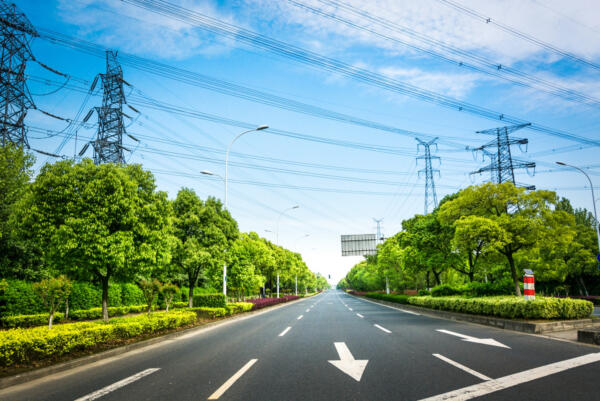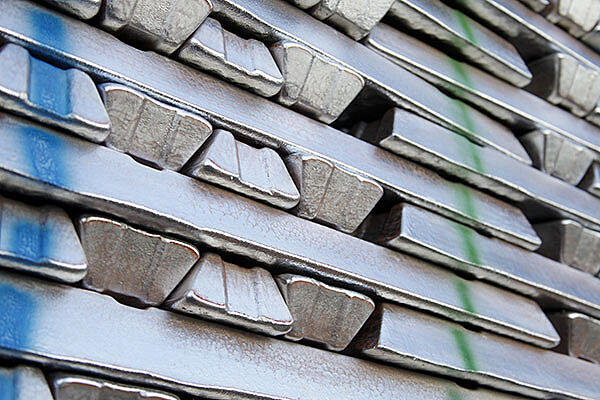Hot-Dip Galvanizing (Steel + Zinc) Industry Sustainability Resources

The hot-dip galvanizing industry is committed to supplying a sustainable product with a low environmental impact, superior long-term economic benefits and provides long service life for steel structures to minimize the impact on future generations. The sustainability of hot-dip galvanized (HDG) steel is closely tied to the steel and zinc industries as they are the raw materials that make-up HDG steel. The following is a list of sustainable resources the American Galvanizers Association (AGA) and our partners in the steel and zinc industry offer, which shows the universal commitment to sustainability throughout the HDG steel supply chain.

HDG Steel Industry Sustainable Resources
The AGA and its members have been committed to promoting the sustainability of HDG steel for many years and offer a variety of resources promoting sustainability in the built environment.
- Environmental Product Declaration (EPD) - The AGA published an update to its EPD in 2022. An EPD is based on a life-cycle assessment (LCA) and is a standardized way of quantifying the environmental impact of a product. The industry-wide EPD covers the production of hot-dip galvanized steel from raw material acquisition through the galvanizing process, including steel production and fabrication, and zinc refining. Our 2022 update includes information on just the hot-dip galvanizing impact and can be used to estimate impact on different types of steel not included in our EPD.
- Hot-Dip Galvanizing for Sustainable Design- This capstone publication discusses the sustainability of HDG steel by examining both its environmental and economic impacts. On the environmental front, the brochure details the life-cycle assessment (LCA) for hot-dip galvanized steel, how the product can contribute to LEED points, and provides two case studies comparing the environmental impact of galvanizing vs. painting steel. Additionally, the publication shows the economic impact of hot-dip galvanizing through life-cycle cost (LCC) and cost comparisons to painted steel.
- Sustainable Development & Hot-Dip Galvanizing Seminar / Webinar - This seminar provides an in-depth analysis of the sustainable aspects of hot-dip galvanizing. Seminar content includes zinc and the environment, LEED, life-cycle assessment (LCA), life-cycle cost (LCC), environmental and economic case study comparisons, and much more. We offer this seminar a few times a year via a webinar, host an on-demand online course, and have a form to request an in-person Lunch and Learn seminar on location.
- Life-Cycle Cost Calculator - The life-cycle cost of corrosion maintenance for any one project is two to five times the initial cost, making the selection of a corrosion protection system for your project critical. However, too often the only cost analysis performed at the inception of a project is initial cost. The Life-Cycle Cost Calculator (LCCC) uses your specific imputed project data to develop and compare the initial and total cost (initial + maintenance) of more than 30 steel corrosion protection systems (paint, metallizing) to hot-dip galvanizing. The tool was updated to include 2021 paint and hot-dip galvanizing cost data.

Steel Industry Sustainable Resources
The American Iron & Steel Institute (AISI) along with the American Institute for Steel Construction (AISC) publish a number of resources pertaining to the sustainability of steel in construction. Below are just a small sample of the sustainability resources they offer.
AISC Sustainability Resources
- Environmental Product Declaration (EPD) - The structural steel industry actively supports the transparent reporting of environmental impacts associated with construction products. Many rating systems (LEED V4), standards (ASHRAE 189.1), green building codes (IgCC), and specific customers require the submission of environmental product declarations (EPDs) for products delivered to the project site. AISC develops industry average EPDs for three products: Fabricated Hot-Rolled Structural Sections (PDF), Fabricated Steel Plate (PDF) & Fabricated Hollow-Structural Sections (HSS) (PDF).
- Steel Talks: Choosing the Right Framework for Sustainable and Resilient Structures - Today sustainability is just as important as it has been, but resiliency has become part of the equation as well. This course discusses the sustainable and resilient characteristics of structural steel and compares those characteristics to those of wood and concrete. Request a Steel Talk from AISC.
- Myths and Realities of Sustainable Design - This recorded educational session explores some of the common myths surrounding the sustainable choice of construction materials and allow the attendee to gain a broader perspective on the selection of sustainable construction materials.
- More than Recycled Content: The Sustainable Characteristics of Structural Steel (PDF - white paper) - The success of steel recycling is a great example of sustainable practices on an industry wide scale. But discussions focusing on the high recycled content of structural steel often overshadow the other sustainable characteristics of domestically produced structural steel. Structural steel is not a single attribute material. It is a multi-attribute material that contributes to sustainable construction in a variety of ways.
- Buy Clean - Buy Clean regulations are intended to encourage the use of products and materials with a smaller carbon footprint. As of December 2021, a Buy Clean law has been passed in California (AISC's Quick Guide to Buy Clean California, PDF) and Colorado, and the list of additional states that have considered Buy Clean legislation includes Washington, Oregon, Texas, Minnesota, New York, and New Jersey. The Biden Administration released an executive order and accompanying Federal Sustainability Plan outlining the nation's strategy for carbon emissions reduction. Among those goals is the creation of a federal Buy Clean initiative and details of this program will be determined in 2022.
AISI Sustainability Resources
- Sustainability in the American Steel Industry (VIDEO) - This short four-minute video discussed the sustainability of the American steel industry presented by Kevin Dempsey, President & CEO of AISI.
- Facts About American Steel Sustainability (PDF) - This short two-page document summarizes how the American steel industry is the cleanest and most energy efficient of the leading steel industries in the world. This is due to the high percentage of steel made from recycled scrap to make new steel, and the use of domestically-sourced iron ore pellets, as well as the increasing use of natural gas in place of coal and coke to make iron and steel with lower emissions.
- Sustainability in Steel Recycling (PDF) - Steel is 100% recyclable without the loss of properties, which means it can be recycled into the same material of the same quality again and again. A steel beam can become another steel beam, or a refrigerator, car door or roof panel. When you buy steel you are buying recycled. In addition to being continually recyclable, steel’s durable characteristics enable many common products to be reused. This short two-page PDF details the recyclable aspects of steel and provides quantitative examples to reinforce it as one of the world's most recycled materials.
- Steel Sustainability in the Construction Market (PDF) - steel has become one of the most reliable, most used and most important materials used in construction. Structural steel produced in North America typically contains 90% or more recycled steel. Steel framing itself contains a minimum of 25% recycled steel and is continually and completely recyclable. This short two-page document details steel's importance to the construction industry and highlights many sustainable aspects.

IZA Zinc Sustainable Resources
The International Zinc Association (IZA) and its members are committed to the principle of sustainability. IZA believes that protection of the environment, open engagement on sustainability issues, and supporting sustainable development practices not only drive long-term prosperity for the zinc industry; they enable zinc users to become more sustainable through the use of zinc products. IZA has several resources to show the zinc industry's commitment to sustainability and a small sample of those are listed below.
- Zinc Sustainability - IZA recently updated their website with a new section on zinc's sustainability. IZA promote sustainable development through its targeted projects in the zinc sector, including lifecycle assessments, decarbonization roadmaps, and responsible sourcing standards. The following links describe those initiatives:
- Zinc - A Sustainable Material Essential for Modern Life Publication (PDF) - Zinc is a versatile element, essential to life and important in many industrial processes that often go unseen. This publication details how zinc is essential for the environment, human health, agriculture and life in itself. The sustainability of zinc and its many uses are also covered as well as how zinc contributes to a circular economy.
- Zinc Sector Sustainable Development Goals (SDG) Sector Roadmap (PDF) - The SDGs outline a plan of action to address the world’s greatest environment, social, and economic challenges by 2030. In order to achieve these 17 Goals, ambitious and concerted efforts from across public and private sectors, wider society, and individuals are imperative. This document outlines IZA's plan to accomplish these goals as well as indicates the progress they have made.

